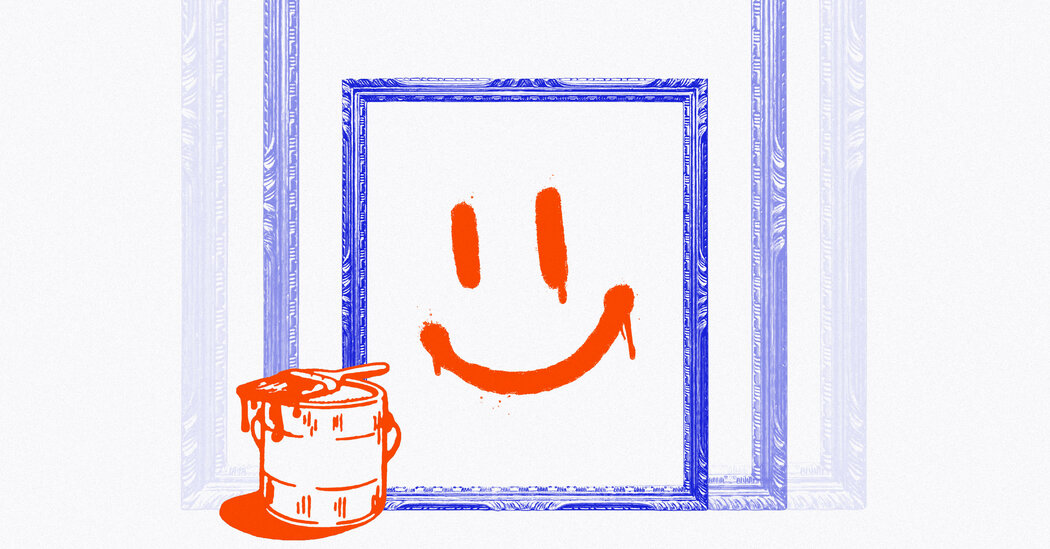
A 37-year-old artist who calls himself Penny Pinch says he’s an anticapitalist, but not the angry kind. His paintings feature flat-nosed men in buffalo suits. They’re in the bold, cartoonish street style of Keith Haring or the animated series “Adventure Time.” He was a musician and then a pastor before he tried his hand at art. He and his wife, who works for a Christian social service agency, have children ages 5 and 6. Last year he made $40,000 and his wife about $45,000, he told me.
This Friday, Penny Pinch the anticapitalist will be involved in something that might warm the hearts of a lot of capitalists, especially those who are interested in innovation. Sixty-one of his works will go on sale in an unusual auction in which the price starts high and then keeps falling until someone buys.
This type of auction, known as a Dutch auction, is typically used for flowers, fish and other perishable products, because it produces sales quickly. Not for art. Yet this is the second year Penny Pinch has sold works this way. Last year the stunt drew the attention of The Economist magazine. It’s the kind of thing you can imagine catching on if it works — whatever “works” means (raising money, raising consciousness, entertaining the clientele?).
Several aspects of this auction are interesting, including where he got the idea, why he’s going ahead with it, and the pros and cons of the Dutch style from the point of view of economists. I’ll start with the last part because this is an economics newsletter.
This post was originally published on this site be sure to check out more of their content






